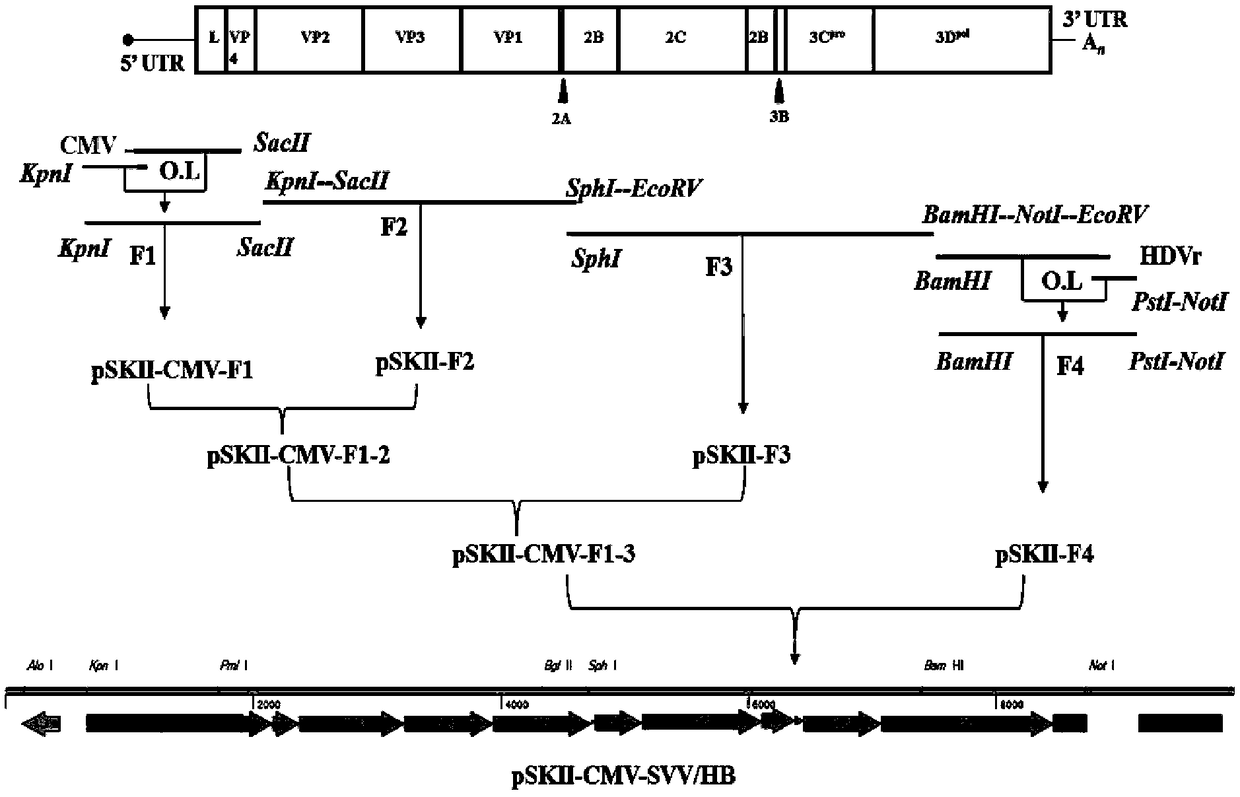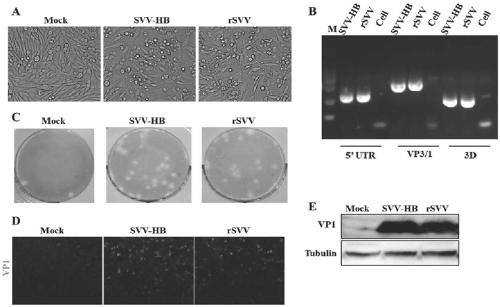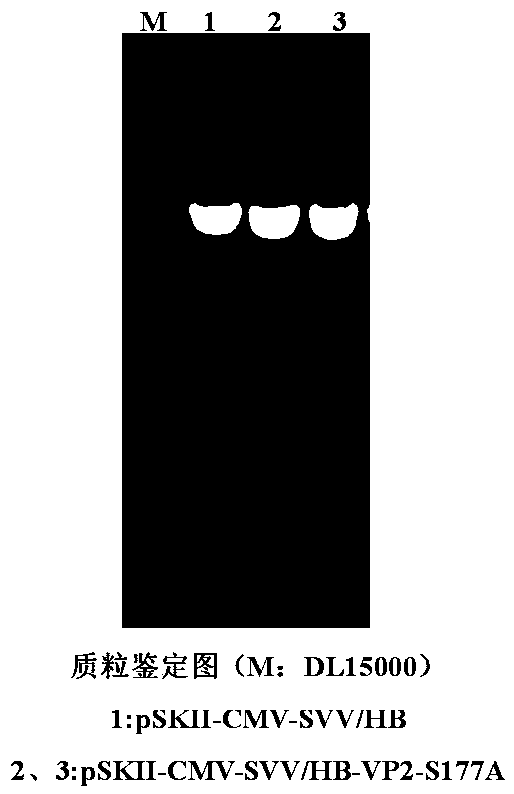Seneca Valley virus recombinant plasmid and Seneca Valley virus recombinant virus, and construction methods thereof
A technology for recombining plasmids and viruses, applied in the direction of viruses, viral peptides, viruses/phages, etc., can solve the problems of SVV infection characteristics, unclear host range, and no commercial vaccines
- Summary
- Abstract
- Description
- Claims
- Application Information
AI Technical Summary
Problems solved by technology
Method used
Image
Examples
Embodiment 1
[0040] (1) Build routes such as figure 1 shown. According to the full-length genome sequence of SVV HB-CH-2016, it was divided into four large segments: F1, F2, F3, and F4 to amplify its full-length genome. At the same time, a CMV promoter sequence from pEGFP-N1 is fused at the 5' end of the genome, and a hepatitis D virus ribozyme recognition sequence HDVr-poly sequence is fused at the 3' end. Cloning each fragment into the low-copy plasmid pBluescript II SK in sequence to obtain the infectious cloning plasmid of the SVV HB-CH-2016 strain mediated by the CMV promoter, named pSKII-CMV-SVV / HB;
[0041] (2) Rescue of SVV infectious virion (rSVV)
[0042] figure 2 For the rescue of rSVV, where, figure 2 -A is the cytopathic pattern of BHK-21 cells infected by SVV HB-CH-2016 strain and rSVV for 18 hours, figure 2 -B is the PCR identification of rSVV--using SVV-specific 5'UTR (366bp), VP3 / 1 (542bp) and 3D (298bp) genes to carry out PCR amplification of rSVV, figure 2 -C i...
PUM
 Login to View More
Login to View More Abstract
Description
Claims
Application Information
 Login to View More
Login to View More - R&D
- Intellectual Property
- Life Sciences
- Materials
- Tech Scout
- Unparalleled Data Quality
- Higher Quality Content
- 60% Fewer Hallucinations
Browse by: Latest US Patents, China's latest patents, Technical Efficacy Thesaurus, Application Domain, Technology Topic, Popular Technical Reports.
© 2025 PatSnap. All rights reserved.Legal|Privacy policy|Modern Slavery Act Transparency Statement|Sitemap|About US| Contact US: help@patsnap.com



